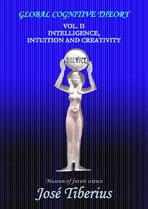4.a.3 Identical or monozygotic twin studies
Several studies on intelligence using IQ inheritance among identical twin brothers have shown correlations close to 80%.
The argument of identical or monozygotic twin studies is definitive because it would not make much sense intelligence had a genetic component so high only in some cases.
Another question is why it does not always appear like that. The cause of the apparent inconsistency is Mendelian genetics.
An exciting aspect of identical twin studies on IQ inheritance is that if the correlation of the twin's IQ with their respective parents were measured, the explained variance would be noticeably smaller than the mentioned percentage due to the genetic combination derived from Mendel's laws.
One of the most well-known authors for his IQ studies with twin brothers and his articles is Arthur Jensen.
In their book, The Bell Curve, Charles Murray, and Richard J. Herrnstein present a meta-analysis bringing together articles about twin brothers, adopted and standard siblings. It works with different, even contradictory conclusions, some of them with monozygotic and dizygotic or non-identical twins. It is a book on sociology and the consequences of education; it states there is a correlation between genetics and environmental influence that could generate pockets of populations with slower development.
4.a.4. Siblings and dizygotic or non-identical twin studies
In statistical twin studies on IQ inheritance, if the observed correlation in one case is 40% and, taking into account Mendelian genetics, the expected is 50% of the real correlation, the degree of heritability will be the ratio 40% / 50% = 80%

It is necessary to make some theoretical hypotheses to establish the expected correlation. It will not be the same knowing or not the rules for determining the supposed dominant and recessive gene. Also, the analysis could be quite complicated if different chromosomes affect the studied characteristic.
Regarding the environmental circumstances; if they were relevant, the resemblance between the IQ in siblings and dizygotic and non-identical twins should be more prominent than observed. These circumstances are equal within the same family, except if there is disproportionate weighting to the influence of a different math teacher or any other subject. In such a case, the sum of all the parameters would be higher than the unit.
4.a.5. Studies among families: father, mother and one sibling
There is not very much research on intelligence inheritance using the IQ; In fact, there is only one study of this characteristic despite many works affirm to do so, but when asking for the data, it does not exist, and they are purely theoretical.
The initial results on the correlation of the IQ were low. If the calculi had the modification regarding the observed and expected values, the results might have been higher.
The genetic affinity in intelligence between parents and children will be, as a maximum, equal to that of siblings or dizygotic and non-identical twins.
The EDI Study – Evolution and Design of Intelligence belongs to this group. If the results are similar in additional studies, the debate over the heritability of intelligence could end, at least in its current scale. At the same time, it is possible that other disputes are becoming more critical.
The obtained correlation was higher than 80% in many cases, reaching 96% and 99% in some of them.
The key to success doubled. On the one hand, the use of the Conditional Evolution of Life model; on the other hand, The EDI Study makes groups of the data set to compensate for variations due to the random component of the Mendelian combination.
With the grouping methodology, it is not necessary to correct the values observed according to the expected correlation. Therefore, there is the advantage of not needing to be known. Moreover, other variables of small intensity and random distribution that could affect intelligence or its manifestation and measurement will compensate automatically.
The multiple dimensions the different groupings imply have allowed an analysis of sensitivity to be carried out in respect to the goal function, changes in partial aspects of the model's structure, and the parameters involved with a reasonable guarantee that the results are not due to somewhat random coincidences of the sample information.
